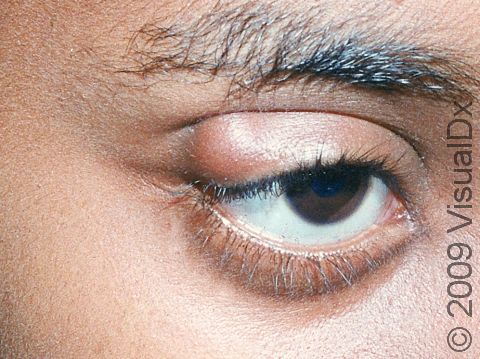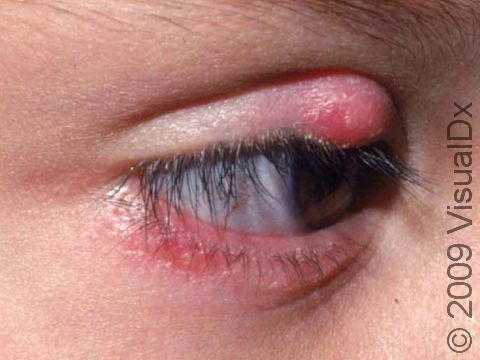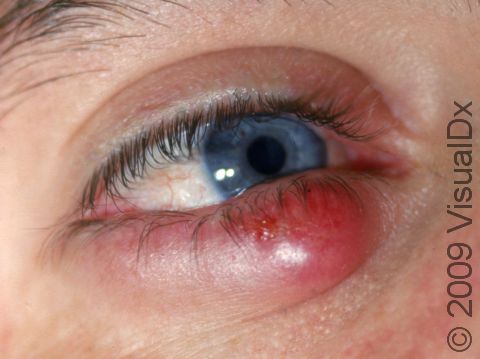Stye (Hordeolum and Chalazion)
A stye (hordeolum) is an inflamed, swollen growth of the eyelid. Styes can occur at the edge of the eyelid or farther up the lid on either the inner (tarsal side) or the outer (skin side) of the lid. A chalazion is the chronic form of a stye, and its cellular makeup is different than that of a stye.
Both the meibomian and sebaceous oil glands of the lid can be involved in this process, which begins with a blockage of the normal openings of these glands, leading to the swelling. Typically, there is bacterial contamination.
Who's At Risk?
Styes and chalazions are extremely common. You are more likely to have this problem if you have:
- Dry skin problems
- Blepharitis
- Acne rosacea
- Poor lid hygiene
- Incomplete removal of eye makeup
- Outdated or infected cosmetics
- Increased stress
- Hormonal changes
Signs & Symptoms
One should be suspicious of having a stye when there is the rather rapid development of a pus-filled lesion or swelling on the edge of the eyelid or on the lid itself. Chalazions are more like a rounded lump on the skin and are harder in consistency.
Some of the things you may experience include:
- Pain
- Redness of the eye
- Discharge from the swelling
- Tenderness to touch
- Tearing
- Very mild blurring of vision
- Burning sensation
- Scratchy feeling in the eye
- Drooping of the eyelid
- Crusting of the eyelid edges
Self-Care Guidelines
Apply frequent (4–6 times daily) very warm compresses until there is no more drainage from the stye or chalazion. The compresses must be hot enough to help drain the growth yet not so hot as to burn the very delicate eyelid skin. The resolution process usually takes 7–10 days at most. Good lid hygiene is also mandatory. Over-the-counter ointments or drops have no treatment value.
Note: Recurring styes or chalazions without other related factors suggest possible serious disease. With the start of very warm compresses, the growth may get larger temporarily before draining.
Treatments
Treatment of styes or chalazions may involve any or all of the following:
- Surgical incision and drainage
- Injection of steroid into the growth
- Antibiotic ointments
- Antibiotic drops
- Oral antibiotics (especially if there is possible lid infection suspected)
- Treatment for underlying/contributing conditions such as dandruff, acne rosacea, psoriasis, etc.
Visit Urgency
You should seek medical advice if:
- The eyelids are swollen shut.
- There is no improvement after using frequent very warm compresses for 10–14 days.
- There is pus or very thick drainage from the eye.
- Pain or tenderness is increasing despite compresses.
- The swelling is increasing beyond the first 2–3 days.
- The eyelid is hot to the touch.
- You develop a fever.
- Recurrences are frequent, especially at the same location.
- Progressive vision changes are experienced, including double vision.
Last modified on October 10th, 2022 at 8:33 pm

Not sure what to look for?
Try our new Rash and Skin Condition Finder


